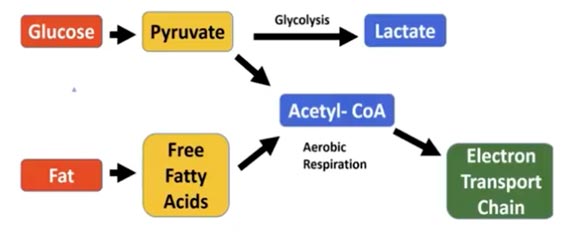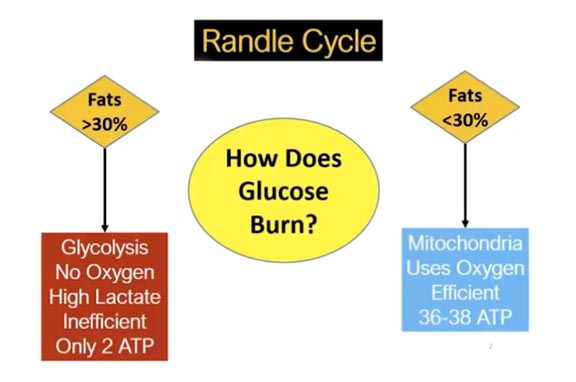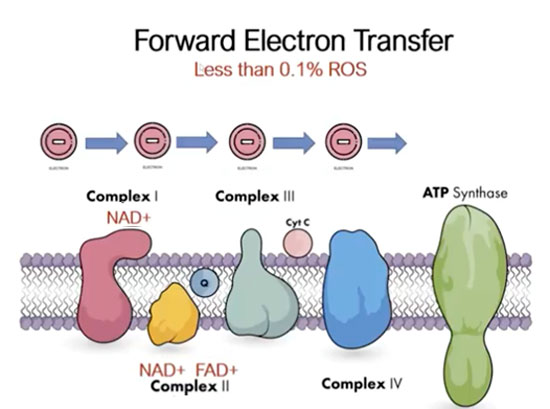L' âge, c'est juste un nombre !
Traduction automatique ici : https://tinyurl.com/4mwjmhtu
How to Optimize Health and Strength — Even if You’re Over 60
Story at-a-glance
- KAATSU — generically known as blood flow restriction (BFR) training — radically improves muscle growth and strength, without risk of injury. This makes it ideal for the elderly
- Strength training is necessary to prevent sarcopenia, or age-related muscle loss, which leads to frailty and premature death. KAATSU tricks your body into thinking you're lifting a much heavier weight, thereby providing faster results. KAATSU also inhibits myostatin, which is a muscle growth inhibitor
- One of the reasons it’s so difficult to maintain muscle mass as you age is because your vascular supply decreases dramatically. When you're doing KAATSU on a consistent basis you’re activating the Type 2 muscle fibers, which generates a wide variety of highly beneficial metabolic biproducts, including vascular endothelial growth factor (VEGF), which acts like a “fertilizer” for capillaries and blood vessels
- For optimal energy production and minimal reactive oxygen species (ROS) production, you want to burn glucose in the mitochondria, and the only way to do that is by limiting your dietary fat content to 30% or less of your total calories
The video above features an interview I did with Dr. Marcos de Andrade, a research physician and CEO of BIOHAXS. We met at Dave Asprey's Biohacking Conference in June 2023, where we ended up arm wrestling.
You can see the outcome for yourself in the video below. de Andrade is 38 years old and an extreme fitness buff. I’m 69, but I still beat him. So, age doesn’t have to be a determining factor or excuse for poor fitness. In this interview, we go on to discuss a couple of my key strategies to optimize health, strength and longevity, regardless of where you’re starting from.
"I want to learn all the tips and tricks that I can to get to the stage in life that Dr. Mercola is in — the same or better," de Andrade says. "I'd love for him to share some of his lifestyle habits and so forth — whatever comes to mind to really explain how this was possible. I'm a really strong guy ... And then a 69-year-old man, which I never expected in my wildest dreams, just yank[ed] my arm like that."
Blood Flow Restriction (BFR) Training
I think there's two primary reasons for why I won against de Andrade. One is that I do a form of exercise generically called blood flow restriction (BFR) training. The other is eating a diet that minimizes reductive stress in my mitochondria.
Unfortunately, most BFR taught in the U.S. is less than optimal. The original version of BFR was developed in Japan 50 years ago, where it’s known as KAATSU. I first heard about it at a biohacking conference in 2017. So, I've been doing it for six years.
Hand grip strength — and by extension arm wrestling — is a barometer of your overall strength and metabolic health, and KAATSU, i.e., BFR done correctly, achieves both. The video above explains in more detail how KAATSU is performed, and how it helps you maintain muscle mass as you age.
The primary difference between generic BFR and KAATSU is the fact that KAATSU is far safer and causes less spastic muscles than all other forms of BFR that don’t use cyclic compression. The other is the equipment. The KAATSU device includes a compressor that inflates and deflates the cuffs that you strap onto your extremities, whereas generic BFR bands provide constant pressure (and hence constant blood flow restriction).
The KAATSU bands inflate for 30 seconds and then deflate for five. They then inflate again at slightly higher pressure for 30 seconds and deflate for five. They do this for a cycle of eight repetitions. The intensity of the pressure can be modified as well.
Part of what makes KAATSU so effective, especially in terms of creating beneficial metabolic byproducts, is the intermittent pressure. The constant BFR pressure does result in muscle growth, but it’s not nearly as beneficial as KAATSU, which is why I now recommend investing in a KAATSU machine if you’re going to get serious about it.
Basically, you simply wear these bands, either on your arms or legs (not both at the same time), while you’re doing some type of resistance training. One of the benefits of this is that you don’t need nearly the same weight to get results, which makes it ideal for the elderly.
Unique Benefits of KAATSU
As mentioned in many previous articles, everyone needs strength training, as it’s necessary to prevent sarcopenia, or age-related muscle loss, which leads to frailty and premature death.
With KAATSU (or BFR), you need only about 70% of your one-rep max weight (the amount of weight you can lift one time), so your risk of injury is massively decreased. As a result, you can also work out far more frequently.
Connective tissue injuries are usually due to lack of collagen in your diet. The amino acid composition of collagen is completely different from that of red meat. And if you're not getting those amino acids — specifically glycine, proline, hydroxyproline and alanine — you can't build collagen. So, you end up with weak connective tissue, ligaments and tendons.
But even if you have enough collagen, you can still get injured if you're lifting too heavy a weight, or your form is incorrect. So, the fact that KAATSU allows you to use such light weights is a major benefit.
Now, the price you pay for that lower weight is an increased number of reps. So instead of doing 10 to 12 reps per set, you’re doing 30 for the first set, followed by a 10-second rest period. For the second set, do 20 reps, rest for another 10 seconds, and for the third set, do 10 reps. Ideally you want to get to the point where you're close to failure by the end of the third set.
Basically, the blood flow restriction tricks your body into thinking you're lifting a much heavier weight. I’ve gained about 20 pounds of muscle mass in the last six years, which is crazy. That typically doesn’t happen once you’re in your 60s. But there is a biological explanation for it.

Download this Article Before it Disappears
Download PDFMuscle Building and Energy Production
Your muscles have two types of muscle fibers: Type 1, which are slow-twitch muscle fibers that get their energy from the mitochondria, and Type 2, fast-twitch muscle fibers that use glucose.

Your body can use two fuels for energy: glucose and fat. If you eat any type of sugar or complex carbohydrate, it's metabolized to glucose. Glucose is then broken down to pyruvate. At that point in the process, there’s a "switch."
The pyruvate can either enter the glycolysis pathway and turn into lactate, which is actually very useful when you're doing high-intensity training such as sprinting — or it can be metabolized into acetyl-CoA through aerobic respiration.
Lactate — frequently incorrectly referred to as lactic acid — causes the exercise burn in your muscles. Lactate gives you quick energy, whereas acetyl-CoA gives you stamina. If we didn’t have the acetyl-CoA pathway, you’d never be able to run more than 100 meters (about 109 yards) or so. You'd just collapse and pass out because you'd be out of ATP.

Now, provided your fat intake is below 30% or so (this is a best-guess at this point, as no one knows exactly what the threshold is), the glucose you consume will be shuttled into acetyl-CoA.
When it goes to acetyl-CoA, it goes into the mitochondria and electron transport chain. Free fatty acids can also be metabolized into acetyl-CoA through beta-oxidation, and there’s a competition that occurs there, which is why your fat intake needs to be low enough for glucose to enter this pathway.
Aerobic respiration uses oxygen in the mitochondria, whereas glycolysis, which occurs in the cytosol, does not use oxygen and is very inefficient. Glycolysis only generates two ATP molecules for each molecule of glucose, whereas aerobic respiration, which occurs in the mitochondria, generates 36 to 38 ATPs per molecule of glucose.
Contrary to popular belief, cancer doesn’t love sugar. It simply uses the glycolysis pathway. But it uses it when your oxygen level is normal and not low like it is with intense exercise. This is called the Warburg effect and likely not a result of cancer but one of its primary drivers.
This is another reason why it’s so important to get your macronutrient ratios right, because if the glucose you eat is constantly shuttled into glycolysis, you’re fueling cancer. At the same time, the fat you consume ends up in fat storage rather than being used up for fuel.
Ultimately, you want to burn glucose in your mitochondria — unless you're doing high-intensity exercise. Then you're engaging your Type 2 fibers and can safely use the glycolysis pathway, but that's the exception. When you're resting, you want to burn glucose in your mitochondria.
And, again, the only way to ensure that is to keep your dietary fat content below 30% of your total calories. If you’re insulin resistant, which means you’re metabolically inflexible, that threshold may be closer to 20% or even 10%. So, if you’re insulin resistant, you’ll want to significantly lower your fat intake until your insulin resistance is resolved. Then you can increase it to 30%.
Beneficial Metabolic Byproducts Triggered by KAATSU
Now, one of the reasons it’s so difficult to maintain muscle mass as you age is because your vascular supply, specifically the microvascular supply (the capillaries), decreases quite dramatically.
This brings us to the second reason why KAATSU is so effective for building muscle, even when you’re older, because when you're doing KAATSU on a consistent basis you’re activating the Type 2 muscle fibers, which generates a wide variety of highly beneficial metabolic byproducts, including:
- Myokines (cytokines produced by muscle) such as vascular endothelial growth factor (VEGF), which acts like a "fertilizer" for capillaries and blood vessels. In other words, it helps you regrow and multiply capillaries and hence improve blood flow. By increasing blood supply to your Type 2 satellite stem cells, they continue to grow and work the way they were designed to.
- Insulin growth factor 1 (IGF-1) which, when elevated locally in your muscle, will increase muscle strength.
- Brain-derived neurotrophic factor (BDNF), which is important for brain health.
- Growth hormones.
KAATSU also inhibits myostatin, which is a muscle growth inhibitor. In other words, myostatin inhibits muscle growth, so by reducing myostatin, your muscles can grow better.
Eat the Correct Fats
Your mitochondrial membranes (inner and outer) are composed of fatty acids, and embedded in the membrane are five different complexes, as illustrated in the image below. The electrons you eat in the form of fats or sugar are shuttled to and through these complexes.
Ideally, the electrons will move forward through each complex. When they move forward, very low amounts of harmful reactive oxygen species (ROS) are generated in the electron transfer chain — only 0.1%. In other words, the whole system is 99.9% efficient. That's about as good as it gets.

However, eating the wrong fats can throw a huge wrench in these works. If you eat high amounts of omega-6 linoleic acid (LA), which seed oils and processed foods are loaded with, then the fats in your mitochondrial membranes will be highly susceptible to oxidative damage and cause a reverse electron transfer that generates huge amounts of ROS — 4% instead of 0.1% (see image below).
This reverse electron flow is also called reductive stress. I suspect this reverse electron transfer phenomenon is the primary reason why we're having this epidemic of chronic degenerative diseases.

Key Points Summary
So, to recap the key take-home points from all this:
If you’re insulin resistant, consider a low-fat diet (10% to 20% of daily calories) until your insulin resistance resolves, at which point you can move up to 30%. For those who are generally healthy, I would suggest an approximate macronutrient ratio of 30% fat, 55% carbs and 15% protein. |
Avoid all foods that contain seed oils and foods high in LA, such as conventional chicken and pork (their LA content is due to being fed LA-rich grains). This is probably the single most effective way to minimize reductive stress in your mitochondria. |
Healthy carbs include honey, maple syrup and ripe fruits. Limit refined sugars and most grains. One of the healthiest grains is white rice. Cooked potatoes are also good. |
Avoid resistant starches such as cold potato salad. Resistant starches feed negative gram bacteria in your gut that produce endotoxin, which is highly inflammatory. |
If you're metabolically healthy, the sugar you eat will be metabolized in the mitochondria, generating a minimal amount of ROS. |
If you’re metabolically inflexible, the sugar will shuttle into glycolysis and metabolize into body fat. It also leaks out into your blood, raising your blood sugar level. So, high blood sugar is an artifact of dysfunctional mitochondria. It’s not because you're eating too many carbohydrates. |
Low Glycogen Raises Cortisol
One of the foundational concepts of health that I’ve had to radically revise my thinking on is the idea that eating a low-carb diet long-term is the best way to optimize your metabolic and mitochondrial health.
I now realize that this was less than optimal once you became metabolically flexible. The reason for that has to do with the fact that your body requires glucose. If you aren’t eating it, you will go into a hypoglycemic coma and die. Obviously, your body has safeguards to prevent that, and the major one is the hormone cortisol.
The primary purpose of cortisol is to raise your blood sugar when it is too low and you don’t have enough glycogen reserves in your liver. It does this by breaking down your muscles, bones and brain.
It basically sacrifices your lean muscle mass to release amino acids that your liver converts to glucose in a process called gluconeogenesis. So, you do not want your cortisol to be elevated. To repeat, for a long time, I was a proponent of a low-carb diet, but now I realize that chronic low-carb is not a good idea, as it promotes chronically elevated cortisol.
Cortisol also happens to be the primary aging hormone. If it is chronically elevated, you will die prematurely as it is highly catabolic, meaning it will break down your body tissues. To stay healthy as you age, you need to be anabolic and build healthy tissues like muscle and mitochondria, and elevated cortisol will seriously impair those efforts.
Three Supplements Most People Can Benefit From
While I try not to focus on supplements, there are three that I rely on personally, and believe most people can benefit from:
- Niacinamide — A form of niacin (vitamin B3) that is a precursor to NAD+. NAD+ is crucially important for good health and longevity, and 50 mg of niacinamide, three times a day, can effectively boost your NAD+ level. NAD+ also helps preserve muscle mass.
- Methylene blue — Methylene blue helps mitochondrial respiration and improves brain energy metabolism. It also works synergistically with niacinamide.
- Molecular hydrogen — Molecular hydrogen is a powerful selective antioxidant with potent anti-inflammatory effects.
Don’t Let Age Stop You
From my perspective, the dietary strategies discussed here, in combination with KAATSU, are the most impactful tools I can think of to optimize your health and build muscle, regardless of your age. As noted by de Andrade:
"So get at it. Don't put age as a block. Don't put any limiting beliefs as a block. The biggest thing you could do for yourself is get informed. Not having information makes people scared. When you have information, you take back control of your life."
If you are interested in purchasing KAATSU, don’t go directly to their site, but use the link below to grab a 10% discount. However, it is important to know that there are only two models you should get, the current C-3 or the new C-4. The C-3 is the only model available now and there are only a few hundred left. The normal price with the bands is $999.95 but with your Mercola.com discount it is $897.71.
The new C-4 model, come out in the fall and has a bigger battery and some marginal functional improvements, but it is $100 more and won't be here until December (just in time for Christmas). The regular prices of the C-4 $1099.95 but with your discount it is $989.95. The C-3 and the C-4 have no EMF, but that is not true for some of their other models and it is my strong recommendation to avoid purchasing any of their Bluetooth models.




Commentaires
Enregistrer un commentaire